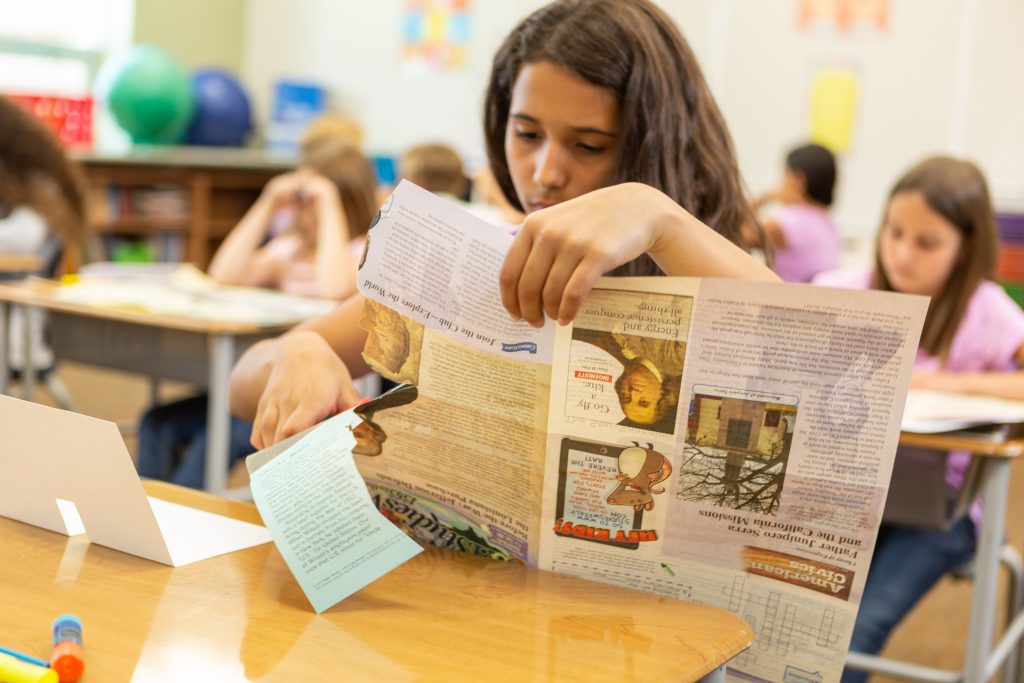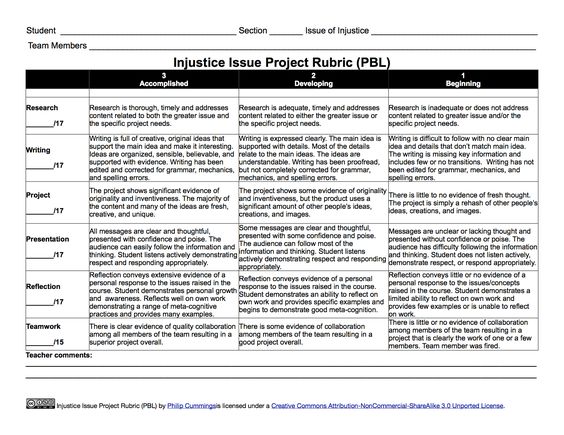Thinking on Education: The Importance of Project-Based Learning

We all want students to experience authentic, meaningful learning within the classroom.
To that end, project-based learning (PBL) is an effective teaching method.
PBL focuses on what students learn more than what teachers teach, as Diana B. Turk and Stacie Brensilver Berman explained in their January/February 2018 Social Education article, “Learning through Doing: A Project-Based Learning Approach to the American Civil Rights Movement.”
“[W]e see project-based learning as an approach that focuses both on the content of curriculum and what students do with what they learn,” the authors explained. “Organized around real-world challenges that students engage in and ultimately master in their learning, PBL units look and feel very different from traditional classroom learning.”
Most importantly PBL is not a one-and-done lesson — this method usually lasts at least a week or more. Turk and Berman added that PBL is teacher-shaped but student-driven, a key component of engaging students. PBL units must also be authentic and as real as possible — both within the classroom and without.
“It must be minds on as well as being hands on,” Turk and Berman said. “Only by engaging in projects that invite transfer — the extension of learning from one project to another, across and outside the curricular realm — do students truly come to own the material they learn and see the value and meaning of the work they are engaged in. Those are the prerequisites for real learning to take place.”

Successful PDL units make students think differently about the continent they are learning, encourage them to ask questions they didn’t think of before, and engage them within their community, Berman added in a March 2018 National Council for the Social Studies podcast, Passionate about Project-Based Learning.
Teachers are often nervous about implementing PBL into their classroom because it can sometimes be loud and messy. But the skills students gain are essential to their future work within a company, the community, and their families. Through PBL, students learn how to question and research, how to elaborate and communicate effectively, and how to identify a problem and chase down a solution as part of a team.
Here are some tips — from multiple experts and resources — on using PBL in the classroom:
1. Teach Team Skills
Many teachers go into PBL without teaching students how to work well with others. But the skills are not instinctive for most students. Teachers should model and teach how to listen actively, engage in respectful discussion and debate, and share the work.
Marie Venturi no share some good ideas for how to do this in a September 2018 kids discover post, Teaching Teamwork.
2. Assign Roles
Unique roles within a group make everyone work together on the projects. The type of project will dictate the exact rules needed, but some general roles are group facilitator, notetaker, progress tracker, teacher liaison, and materials manager. And a January 2018 Getting Smart article, Jamie Beck also suggested for roles that work well:
Head Coach: the one who understands the activity, keeps the team together throughout and understands the final solution well enough to explain it to others.
Journalist: the one who leads the team in organizing results and creating the final product.
Resource Manager: the one who gets supplies for the team, and is the only person who can ask the teacher team questions.
Assistant Coach: the one who ensures everyone shares their ideas and contributes.
3. Tracking Ongoing Progress
Many teachers don’t rely on just one final deadline for the completion of a project because students need clear measurements for what they should be doing and when. To do this effectively, you could set intermittent deadlines for some or all of the following:
- Identify and validating the problem
- Gathering data and research
- Organizing and identifying pertinent data
- Creating a presentation plan
- Finalizing the presentation
- Presenting
- Reflecting on the project
4. Teach Students How to Prepare for a Presentation
 PBL does not always end in a written research paper. Students can tailor their final presentation to the subject studied.
PBL does not always end in a written research paper. Students can tailor their final presentation to the subject studied.
For example, a social studies project may result in students creating a newspaper about the event or movement, or even doing a reenactment of the event.
Students can also present their topics in a variety of ways, such as: a TED Talk style speech, a video, a play, a broadcast, a diorama, a hands-on demonstration, a children’s book, etc. You should be open to allowing the students pick their presentation style depending on their subject, rather than choosing one for them.
If students will be presenting their findings outside of the classroom, teachers should also prepare them for this.

5. Grade through rubrics.
It is challenging to assign a blanket grade to group work and projects. Rubrics allow you to grade the intended outcome for the project both individually and as a group. Students should see the grading rubrics before starting the project so they know how they will be graded.
Good rubrics don’t just assign points, but also describe the reasoning behind those points. Effective rubrics outline where a group is below a standard, approaching the standard, and completing the standard.
Students should also evaluate themselves and each other through another rubric that details their collaboration skills — including how well they listened, communicated, did their assigned role, kept on task and contributed to the final product.
Find some great rubric ideas at our Pinterest board.

6. Allow Time for Reflection
Students should always have time to reflect on the group’s efforts and the final project. This can be done through a peer/group rubric, but can also be accomplished as a class reflection time give students the opportunity to share the following:
- What worked in their group
- Frustrations they had with the project
- What surprised them about the project or topic
- What they learned about the subject
- What they learned about themselves
- Further questions they have about the subject
- Possible rules they like to try for the next project
Emily Murphy explained that reflection time is important for both the teacher and learner. In her December 2018 Edutopia article, she shared a highly successful PBL experience. But she did not realize how differently her students felt about the project’s outcome than she did until they talked as a class after the project’s completion.
“Had we skipped the step of reflecting the day after the meeting, I would have made many incorrect assumptions. The reflection period prompted teachers to spend time considering student perspective and to ask are we following their agenda or ours?” Murphy said.
PBL is not a new teaching method. According to Education Week, it’s been a part of education for more than 100 years.
But with so many technological advancements giving students easier access to information and resources, there are many opportunities in classrooms today to thoughtfully and meaningfully implement authentic, real-world project-based learning. PBL will better prepare students with essential collaborative skills needed for today’s interconnected society.
For further reading, the Buck Institute for Education office training and resources for teachers who want to learn how to apply PBL in their classroom.
Studies Weekly’s consumable newspapers and magazines work well with PBL. Students can use the print and online editions for primary source research and data gathering, and then turn around and cut up the print edition and/or incorporate Studies Weekly’s videos for their presentations. The possibilities are endless.
Use the Training Tab in Studies Weekly Online to learn more.
